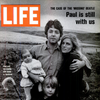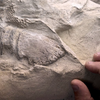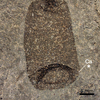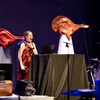Apollo 11 Joins the Mini Museum Educational Donation Program! 🚀🌔

With each edition of the Mini Museum, we set aside a certain number of displays to provide to organizations that work with children all over the world. We're excited to expand our donations by adding Apollo 11 to the Mini Museum Educational Donation Program!
We're kicking off the expanded program by donating 100 Apollo 11 displays to schools, libraries, community centers, and other organizations that work with children around the world. Details below!
About the Mini Museum Educational Donation Program
The Mini Museum Educational Donation Program is a free program. Any organization working with children is welcome to apply. This includes, but is not limited to: schools, libraries, orphanages, community centers, churches, and museums.

There is no charge to apply or receive an item through this program, though non-US recipients may need to cover a small import duty. There is no restriction between private or public institutions or size. Organizations can be anywhere in the world. The only qualification is that the organization must work directly with children.
To sign up for our first Apollo 11 educational donation event, please visit https://minimuseum.com/apollo2020/.
Applications for our Apollo 11 launch donation will be open until March 20th, 2020. Please note that application to the program does not guarantee receipt of an item. Once closed, we will make a random selection of 100 participants. All selected entries will be validated prior to shipment and any duplicate entries will be removed.
About the Apollo 11 Command Module Foil Specimen
This specimen is a fragment of mission-flown kapton foil (aluminized polyimide film) which provided thermal protection for the astronauts aboard the Apollo 11 Command Module. The material was removed during the decommissioning process and repurposed into small gift-sized pieces for people who worked on the Apollo program.
Over the years, a few of these gift pieces have made their way into the public, typically through public auction to space memorabilia collectors. We've worked hard to repurpose this material into smaller displays in order to share the achievements of the Apollo program with more people around the world.

The specimen measures approximately 1mm x 1mm and is enclosed in an acrylic cube with a magnified lid for easy viewing. The acrylic cube is housed inside a padded, glass-topped riker box display case measuring 5 1/2" x 6 1/2".
An information card is included with images from Apollo 11. The card also features a centerline die-cut square matching the dimensions of the acrylic cube. This allows you to showcase the specimen inside the display case with any one of four different designs.

About Apollo 11
The Apollo program was conceived during President Dwight D. Eisenhower's administration and later dedicated to President John F. Kennedy's goal of "landing a man on the Moon and returning him safely to the Earth" within a decade.
President Kennedy proposed this bold agenda during an address to the United States Congress on May 25th, 1961. On July 20, 1969, NASA fulfilled the mission when Neil Armstrong and Buzz Aldrin became the first humans to land on the Moon. This was the 11th flight of the Apollo program, and the success was broadcast live to the entire world.
Piloted by astronaut Michael Collins, Command Module Columbia orbited the Moon while fellow astronauts Neil Armstrong and Buzz Aldrin explored the surface. The craft carried all three astronauts safely back to Earth, splashing down in the Pacific Ocean on July 24, 1969.
The technological and scientific breakthroughs associated with the Apollo program were vast and long-lasting, but it is the human achievement that has held our imaginations for so many years.

Featured Product
Joe Frazier Boxing Glove
Cool Things!

Is “Paul is Dead” Dead?: Unpacking One Of Pop Culture’s Most Enduring Conspiracy Theories

Scientists Discover Hooves and Skin in Preserved Dinosaur "Mummies!"
A dinosaur discovery just in time for Halloween! In a new analysis of a group of fossils from Wyoming, Scientists have determined this group of fossils are dinosaur “mummies,” with preserved skin and even hooves.

Scientists Record a Bat Catching Birds Mid-Flight!
Bats, birds, screeches, oh my! In a reverse-Hitchcock twist, a new study reveals that a species of European bat catches and eats birds mid-flight.
Specimen Deep Dives

The House that Ruth Built: The Story of the Old Yankee Stadium

The Queen of the Skies: the Story of the Boeing 747

Old Ironsides: The USS Constitution and the Start of the U.S. Navy
Long Form Articles

The Artist Behind the Macintosh: Susan Kare and Apple Computers
While the two Steves, Jobs and Wozniak, are the most well known faces behind Apple computers, equally important to the products and culture of the company were those who crafted the experience of using their computers through design. The most notable of these visual architects was Susan Kare, a designer responsible for “humanizing” Macintosh computers.

Can I Lick It? Yes You Can!
Have you ever been unable to tell if a fossil was really a fossil, but you were too embarrassed to admit it? Have you ever wanted to lick a fossil just because, but you didn’t want to risk judgment from your peers? Well, good news! You can kill two birds with one stone! Licking a fossil can actually help you determine if it’s the real deal or just another rock.

Is It Legal To Own a Meteorite: How to Start Your Outer Space Collection!
Meteorites are some of the rarest geological specimens to be found on Earth. Of course, since these stones are not of our world, purchasing them can sometimes be a confusing process. Is it legal to own a meteorite? In short, yes! Read on for help starting your cosmic collection!

















